


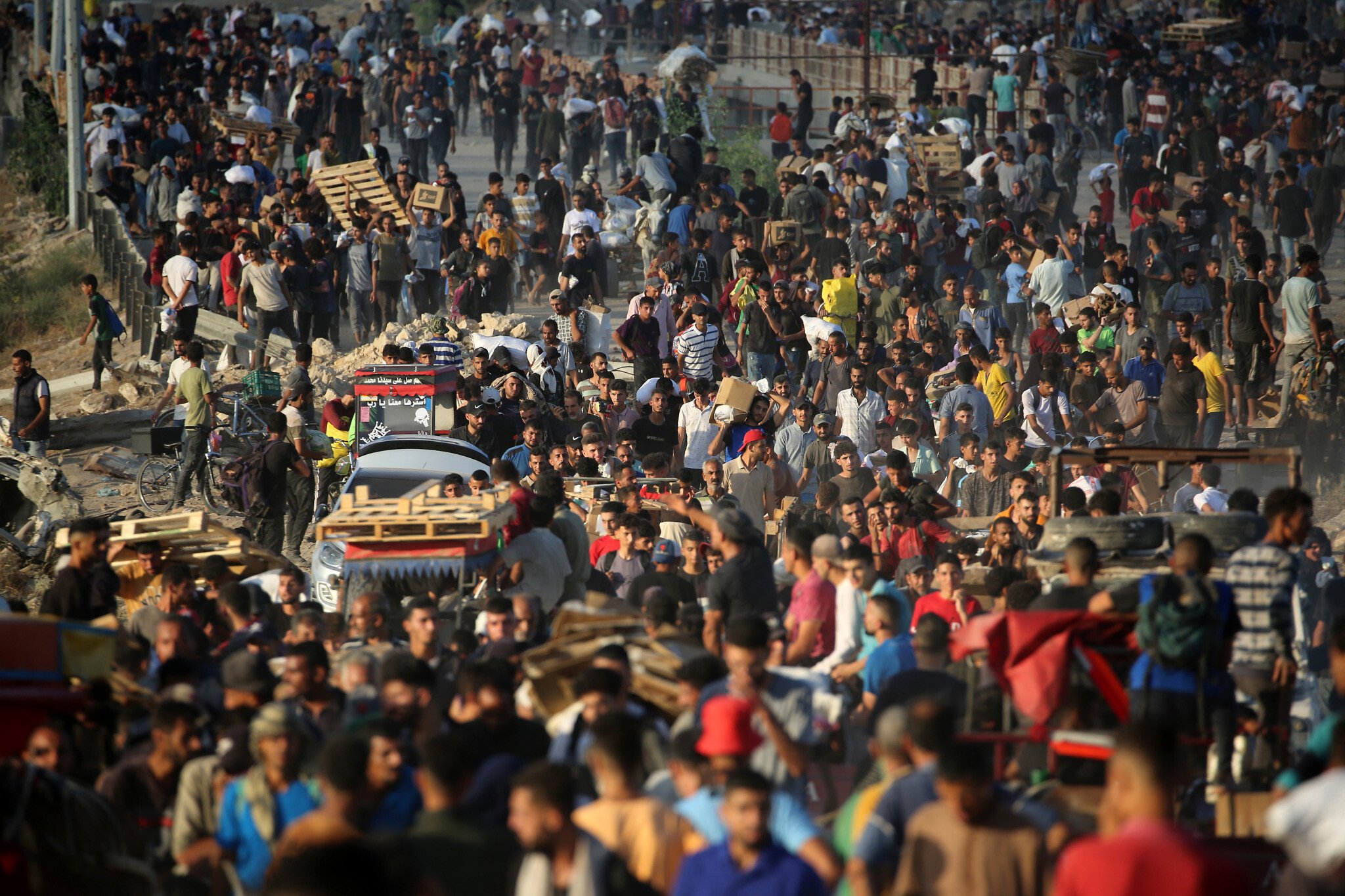
The Gaza Humanitarian Foundation (GHF), a US- and Israeli-backed group that has been supplying food aid to the Gaza Strip in recent weeks, said Wednesday that it will also begin supplying aid “directly to communities” through a new program after a “successful community distribution pilot.”
The group said that its new program aims to provide “20,000 boxes, or 1.2 million meals, per day in all regions of Gaza,” up tenfold from the 2,000 boxes it says are currently distributed daily.
The controversial aid group has been trying to improve its services in the Strip, amid reports of chaotic distribution, long waits, unclear instructions, Israeli gunfire and armed looters that have resulted in the reported killing of hundreds of Palestinians near its Gaza aid distribution hubs.
The GHF, which closely coordinates with the Israeli military, has acknowledged reports of violence but says they occurred beyond its operations area.
Israel has said the death tolls provided by Hamas authorities are inflated, but the military has admitted that its troops have killed “several” civilians near the aid sites.
In its statement on Wednesday, the GHF said its new program will work with a local organization to deliver food “directly to people in need – safely, without interference, and where they live,” as opposed to only distributing food boxes at fortified aid sites in southern Gaza, far from the population. It named Al-Amal as an agency involved in the food transfer, though it is unclear what it is.
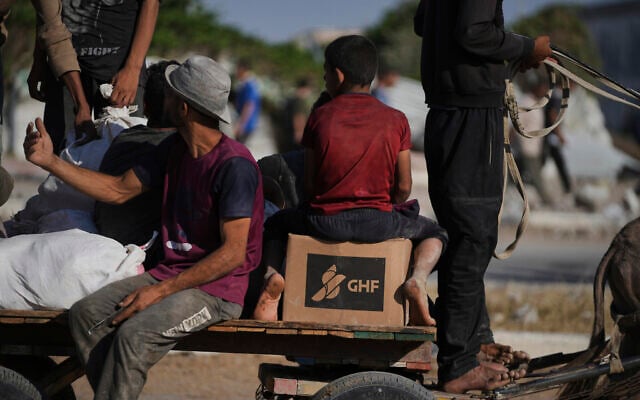
“The Gaza Strip is a dynamic, dangerous environment that requires innovative solutions to get food to those who need it most. This is the latest example of GHF doing exactly that,” GHF’s interim executive director John Acree said in the statement. “I am encouraged by the results of this program and proud to work alongside our local NGO partner as we continue to feed the people of Gaza.”
According to the GHF, the new program starts with local community leaders, who will contact the foundation, “either directly or through an NGO partner,” after which the GHF will “vet” the leader, “assess their need,” and then coordinate “the delivery of an initial number of boxes of food aid.”
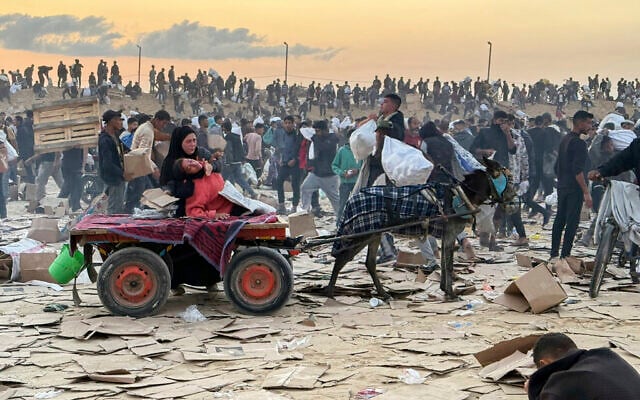
“The community leader collects the boxes at a predetermined location and distributes them to known members of their community,” the statement said, adding that the GHF will then verify that “all boxes are delivered to people in need using a list of aid recipients supplied by the community leader.”
To scale the program, the GHF “encourages local leaders throughout Gaza to contact us to request to participate in this program,” so their communities can receive aid directly.
The methodology of distributing the supplies via community leaders is similar to those used by aid organizations that have been operating in the Gaza Strip for years.
“We simply can’t keep doing things how they’ve always been done,” Acree explained. “Big challenges need new thinking, and I commend our team for continuing to think outside the box as we address pressing humanitarian needs on the ground.”
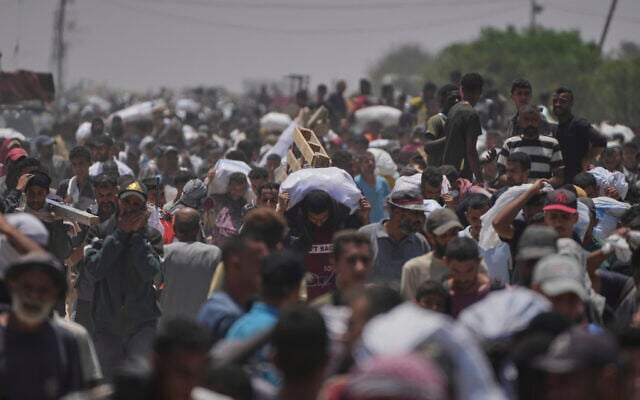
The GHF’s current system requires aid-seeking Gazans to trek miles, including at night, to receive aid boxes.
A local Palestinian reporter writing for NPR said in a report published Sunday that the system is chaotic and operates on the “law of the jungle.”
Anas Baba, NPR’s producer in the Gaza Strip, said that in attempting to get food to bring back to his family, he faced “Israeli military fire, private US contractors pointing laser beams at my forehead, crowds with knives fighting for rations, and masked thieves.”
As GHF sites don’t have fixed operating hours, Gazans instead rely on word of mouth to know when they are open for business. But they often get it wrong, leading civilians to approach sites before the contractors and Israeli soldiers are ready for them, the report said.
Baba said that when he arrived at the site, which was not yet open, an Israeli tank “immediately opened fire,” and gunfire continued for several minutes, wounding and killing several civilians in the vicinity.
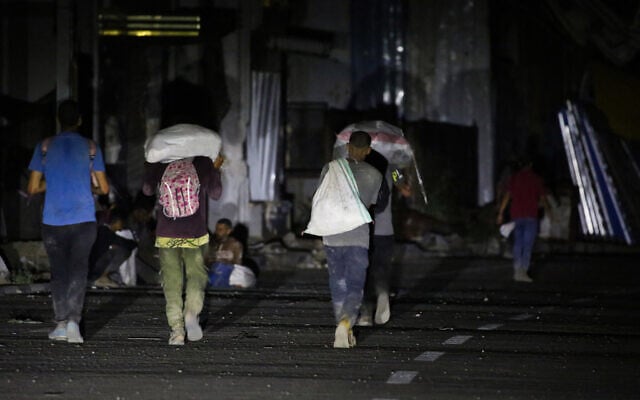
When the gunfire finally stopped, Baba said he “ran with the crowds toward the food distribution site, stepping over bodies.” He described the scene as “a human blender” where thousands of people “were swirling around the food boxes, fighting each other to take as much food as possible.”
“Those who get there first get to grab the most food before it quickly runs out,” Babas said.
Babas also said that, despite the GHF sites’ entire reason for existence being that Israel wants to stop Hamas from looting or diverting aid for its own benefit — which it says was commonplace during the previous, UN-backed aid distribution — he saw people he is “certain were Hamas members, based on their dress, taking food for their families.”
After successfully fighting for aid boxes, Baba said that he was approached by masked and armed men who told him to “give them half of our loot, or we would be harmed.”
As it currently stands, he said, the GHF system forces Palestinians to “gamble with their lives to collect some food to bring back to their families.”
